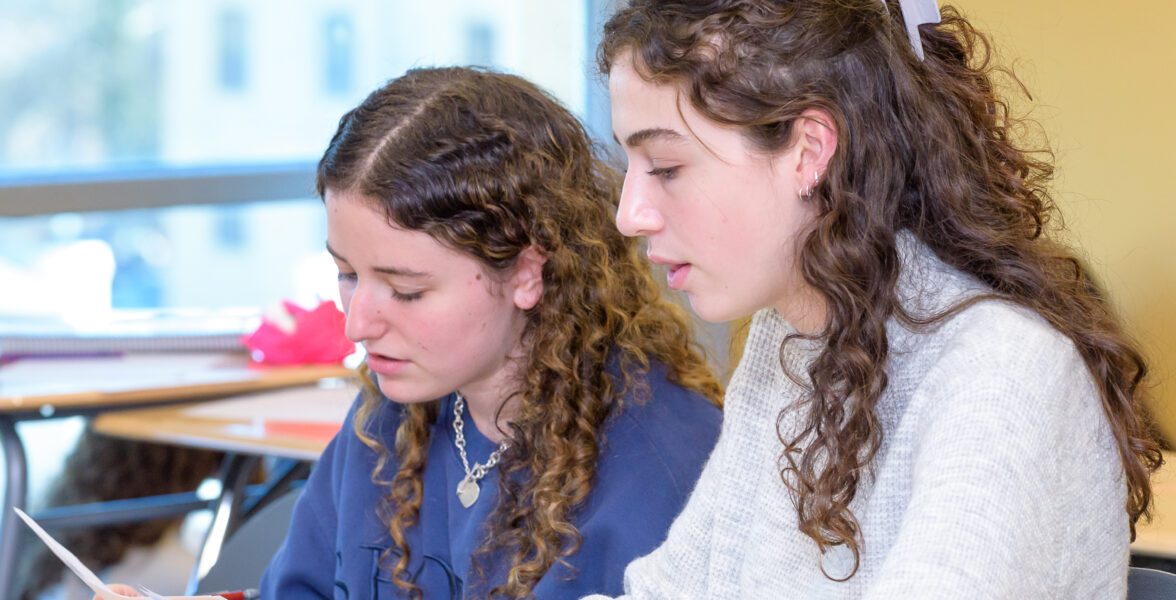
Solving For “X” And Finding Out “Y”
If you think back to your days sitting in high school math class, no doubt, most of you might recall asking, “When am I ever going to use this?” Twenty-five years ago, as I began my career teaching bleary-eyed 10th graders to solve rational equations and take imaginary numbers to higher powers, such questions were more than just tired complaints. They became a kind of existential crisis. What am I doing? Why am I doing it?
I considered the possibility that the math I was teaching gave students a foundation for the higher, more beautiful math that lay at the apex of the mountain – calculus. But I also knew that most students were either not going to take calculus or didn’t appreciate the power of this great discovery of Newton and Leibniz. My own calculus experience in high school was more akin to paint-by-number than creating art.
I then figured that math is important because of its utility in the “real world,” and there is much truth to that. But my first career after college, working for a consulting firm, did not substantiate that view. Did I, or anyone I know, ever use a logarithm? Cosine? End behavior of polynomial functions? It seemed that, aside from probability, statistics, and a few other odd topics, most careers only required math that was learned by Algebra 1. I struggled with the idea that all students are subjected to the same math education required by the small minority who become mathematicians, engineers, and high school math teachers.
So what was a 25 year old, somewhat disillusioned, high school math teacher to do?
I realized that if my career choice was to be meaningful, I had to go beyond solving for x. I had to explore the ‘y.’ And, moreover, I wanted to show students just how beautiful and powerful mathematics can be in a way that was accessible to all. And so I embarked on a journey to find and share what I call the “Poetry of Mathematics.”
Luckily, it lies everywhere, and its study has enriched my life beyond measure. Below are a few of the many ways that I aim to make classic high school math topics come alive at SAR High School.
Bayes Theorem and Humility
My favorite problem in all of mathematics: Can you solve it? Six coins are in a bag, five of them regular and one double-headed. Without looking, you take out a coin. The chances you have the two-headed coin are, of course, 1 in 6. But then you flip the coin 4 times, and it lands heads every time. What is the new probability that you have the double headed coin?
Unpacking this problem with students is a marvelous exercise. Some might say, “It must be the double headed coin – you got 4 straight heads!” Others counter, “But the chances were only 1 in 6 in the first place – the 4 heads have to be coincidence!”. This problem is solved using Bayes Theorem, a formula that reads P(A|B) = [P(B|A) x P(A)] / P(B), and is computed to be 16/21. It is a fun problem, but it has a profound message for teenagers who may very well be biologically wired for black-and-white modes of thinking. Are we open to questioning our long-held truths when new evidence arises, or do we dig in our heels? Can we be comfortable with beliefs in grayscale? Bayes Theorem suggests that our ideas of truth should be probabilistic and ever-changing. Do aliens exist? Does this boy/girl like me? Does G-d involve Himself in the affairs of man? New information refines probabilities; humility and openness are wise and honest approaches for the truth-seeker.
Higher Dimensions and Free Will
The concept of dimensionality is foundational in geometry. A point is zero dimensions, followed by a line, a square, and a cube, in 1, 2, and 3 dimensions, respectively. But what of higher dimensions? These become increasingly difficult to visualize, given the limitations of 3D physicality. But we can understand their mathematical properties and what they represent. A 4th dimensional cube, known as a tesseract, has 32 edges and 16 vertices. But it can be thought of as the stitching together of every 3D moment of our life. That is, one’s entire lifetime, from birth to death, constitutes a single 4D object: the “timeline” so often referred to in movies. But why stop there? One dimension further, 5D space contains every single possible timeline that one could have chosen, branching out from node after node of each decision point in a person’s life. Thus, in every moment, you are choosing which timeline you wish to observe from the infinite possibilities that exist in 5D space. Does 5D space prove free will? Partially. Consider that just as gravity pulls 3D objects toward each other, 5D “gravity” might very well merge all possible timelines toward particular predetermined events in your life, say, the birth of a child or a tragic accident. It follows from this understanding of higher dimensional mathematics that there is free will AND destiny, a partnership of man and G-d.
Godel’s Theorem and the Limits of Logic
Pinocchio declares “My nose will grow now!” Does it grow? After some consideration, the dilemma becomes apparent — it cannot grow, it cannot not grow. Clever paradoxes like this one present existential problems for a mathematical edifice that is founded on the law of disjunctive inference. For those rusty on 9th grade logic, it states that if A or B is true and A is not true, then B must be true. The Pinocchio paradox and others like it paved the way for the Incompleteness Theorem of Kurt Godel in 1931. He demonstrated that any axiomatic system such as mathematics cannot be both consistent (without contradictions) AND complete (all true statements are provable). For the student who thinks that reason and logic solve all, the theorem hints at the transcendent. At the concrete wall where logic ends, there is a small peephole where G-d looks through, beckoning one to climb the wall and leap into the unknown. It is a place where the mind is silent and the heart claims its rightful place at the apex of the mountain.


